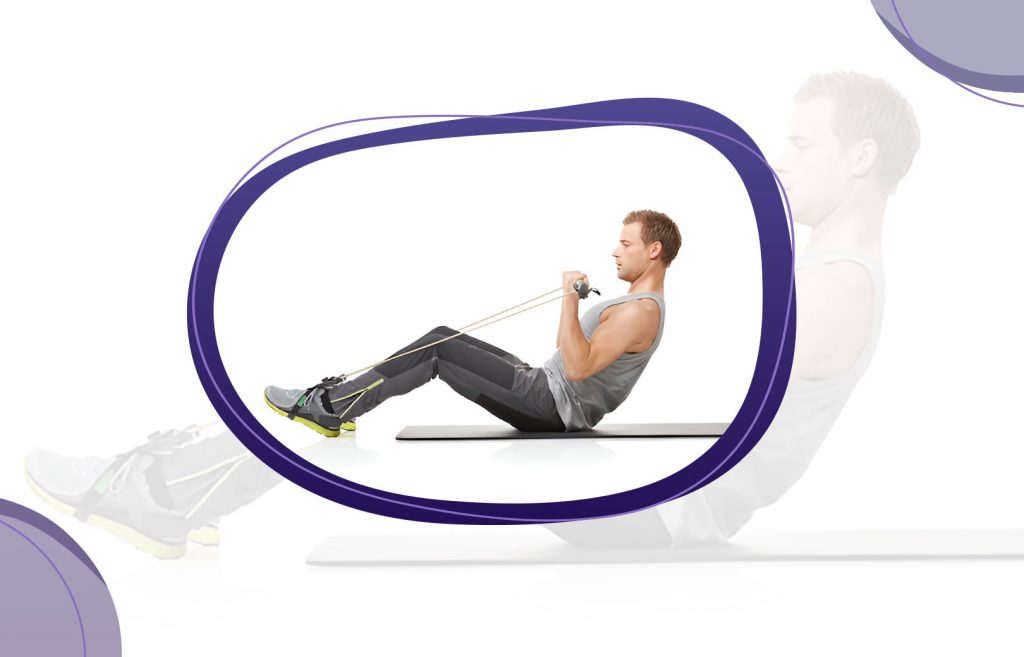
Is working out your abs every day the secret to a stronger, toned core, or could it be doing more harm than good? It’s a common question, especially with all the fitness advice floating around online. The truth about daily ab workouts isn’t as straightforward as some might think. Before diving into a routine of endless crunches, it’s essential to understand how the core muscles function and whether everyday ab training is the best approach to get the results you’re after.

Understanding the Core Muscles
What are Core Muscles?
should you workout your abs everyday ? When we talk about the core, it’s not just about the visible “six-pack.” Your core includes a series of muscles that support your torso, protect your spine, and provide stability for movement.
Muscles in the Core Region
- Transverse Abdominis: Known as the “corset muscle,” it wraps around your spine for support.
- Rectus Abdominis (Six-Pack Muscles): These are the outermost abdominal muscles responsible for that chiseled look.
- Internal and External Obliques: Located on the sides of your abdomen, they assist in rotation and side bending.
Role of Core Muscles in the Body
Your core muscles are crucial for stability and balance, supporting nearly every movement you make. From lifting to twisting, a strong core makes daily tasks and athletic performance more efficient and injury-free.
Benefits of Training Your Abs
Why Train Abs?
Training your abs isn’t just about aesthetics. Building a strong core improves posture, balance, and functional strength.
Core Stability
With a strong core, your body remains balanced, reducing the risk of falls and injury.
Improved Posture
A stable core aligns your spine, helping to reduce slouching and easing tension in your back and shoulders.
Enhanced Athletic Performance
Whether you’re lifting weights, running, or playing sports, a robust core provides the stability and control needed for optimal performance.
Can You Train Abs Every Day?
Is Daily Ab Training Effective?
While it may sound tempting to work out your abs daily, muscles need recovery time to grow stronger. Like any other muscle group, the abdominal muscles require rest to repair and develop after a workout.
Recovery and Muscle Growth
Muscle growth happens during rest periods. Constantly training the same muscles can hinder this process, leading to overuse injuries or burnout.
The Role of Rest in Muscle Development
Allowing time for rest gives muscles a chance to recover, which ultimately leads to a stronger core. Without rest, you may be limiting your progress by not allowing the body to rebuild and strengthen your core muscles.
Common Myths About Ab Workouts
Myth: More Ab Workouts Equals Faster Results
It’s easy to assume that more ab exercises mean faster results. However, quality over quantity is key for core development.
Myth: Ab Exercises Burn Belly Fat
One of the most persistent fitness myths is that ab exercises will melt away belly fat. In reality, spot reduction doesn’t work. For fat loss, a balanced approach that includes cardio and nutrition is essential.
Myth: Abs Need Daily Training for Visible Results
Visible abs come from a combination of muscle and low body fat, achieved through consistent training, rest, and diet—not by daily ab workouts alone.
Risks of Training Abs Every Day
Potential Downsides of Overtraining
Working out your abs every day can lead to muscle fatigue, strain, and even injury.
Muscle Fatigue and Injury
Overworked muscles can become weak and exhausted, increasing the risk of strains or other injuries.
Overtraining Syndrome
Overtraining affects the entire body, leading to symptoms like fatigue, decreased performance, and even mood disturbances.
Impact on Other Workouts
Over-focusing on abs can drain your energy for other workouts, affecting overall progress and leading to a less balanced fitness regimen.
Ideal Frequency for Ab Workouts
How Often Should You Train Abs?
For most people, training abs 2-4 times per week is enough to achieve a strong, toned core without risking overuse.
Recommended Frequency for Beginners
For beginners, 2-3 ab workouts per week is an ideal starting point to build core strength without overwhelming the muscles.
Suggested Schedule for Intermediate and Advanced Trainers
Intermediate and advanced trainers may increase to 3-4 days per week but should focus on variation and intensity rather than daily repetition.

Ab Workouts for Different Goals
Strength and Endurance
Those aiming for core strength and endurance should incorporate exercises like planks and hollow holds into their routine.
Sculpting and Definition
For those looking to sculpt the abs, adding resistance exercises such as weighted crunches can help build definition.
Functional Fitness and Stability
For stability and functional fitness, incorporating exercises like Russian twists and medicine ball throws enhances rotational strength and stability.
Types of Effective Ab Exercises
Best Exercises for Ab Training
- Crunch Variations: Standard crunches, bicycle crunches, and reverse crunches.
- Planks and Core Stabilizers: Standard, side, and plank variations are excellent for stability.
- Oblique-Specific Exercises: Russian twists and side planks target the obliques.
Alternatives to Ab Workouts
Engaging Your Core Beyond Ab Exercises
Beyond traditional ab workouts, engaging the core in daily movements and compound exercises like deadlifts and squats is beneficial.
Full-Body Movements that Work the Core
Movements such as kettlebell swings, battle ropes, and certain yoga poses can help strengthen your core while engaging multiple muscle groups.
Importance of Functional Exercises
Functional exercises that involve the core build overall strength, balance, and stability—making daily activities easier and safer.
Conclusion
When it comes to working out your abs, more isn’t always better. Giving your core muscles time to recover between sessions is crucial for optimal strength, endurance, and definition. Incorporating ab workouts 2-4 times per week, coupled with rest and a balanced diet, is a sustainable approach to achieving a strong, well-defined core. Remember, visible abs are a result of both effective training and overall body fat percentage, so a holistic approach is essential.

FAQs
1. Should I do cardio for visible abs?
Yes, cardio can help reduce body fat, making your abs more visible.
2. Are diet and nutrition important for visible abs?
Absolutely! Diet plays a critical role in fat loss and, therefore, in making your abs more visible.
3. How long should an ab workout last?
Typically, 10-15 minutes per session is sufficient when combined with full-body exercises.
4. Can beginners train abs every day?
It’s better for beginners to start with 2-3 days per week to avoid overtraining and injury.
5. What’s the best ab exercise for a beginner?
Planks and crunches are great beginner exercises to start building core strength.






